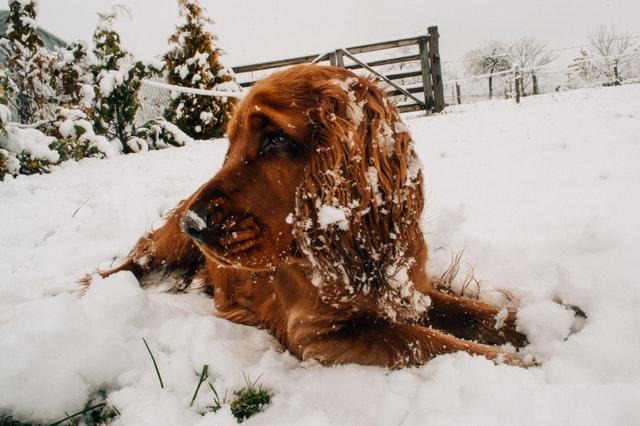
As I write this we’re having a lovely fifty-degree day on the heels of two week’s worth of
single-digit temperatures. While the weather for the remainder of this winter remains to
be seen, another bout of frigid temps is likely. There is no time like the present to review
some key points regarding cold weather preparedness for your pets.
A good rule of thumb is that if it’s too cold for you, it’s probably too cold for your pet.
Temps start to get dangerous for dogs and cats at the 40-45- degree range depending
on the coat thickness and the animal’s health. Diseases like diabetes mellitus,
Cushing’s disease, heart disease or kidney disease (just to name a few) may affect your
pet’s ability to regulate their body temperature.
Twenty degrees is potentially life-threatening for some small breed and short-coated
dogs. Ten degrees Fahrenheit and below is potentially life threatening for all types and
sizes of dogs and wet weather will exacerbate the risk for hypothermia. Acclimated dogs
and dogs with heavy coats will be able to cope with cold temperature extremes a bit
better.
Look at your pet’s body language for cues about their comfort level. Signs that it’s time
to get your pet inside include any of the following: a tucked tail, ears held down, lifting
up paws, whining, shivering, walking slowly or stopping completely; a hunched/tucked
posture with a short stride (trying to limit exposure of body parts to the wind and cold).
Don’t leave pets outdoors or in cold cars for extended periods of time in cold weather. If
you absolutely must leave your pet outdoors, be sure that they have adequate shelter.
This includes unlimited access to fresh water (ice does not count); change water bowls
frequently or invest in a pet-safe, heated water bowl. The floor of the shelter should be
elevated with plenty of thick, dry, clean bedding. The door should face away from the
direction of wind. Avoid heated mats and space heaters, the risk for fire or accidental
burns is too great.
Remove any trapped snow, salt, or sand from your pet’s paws, their undersides, and at
the insides of all four legs when you come in from the outdoors. Keep an eye out for any
redness or cracking at the paw pads. Paw protectants like petroleum jelly will protect the
pads from irritants on sidewalks and pavement. Booties are an even better option to
protect paws. If your dog needs a coat to stay warm outdoors, look for something that
provides coverage from the neck to the base of the tail as well as the belly.
The Pet Plan website has a handy chart that you can refer to that gives a nice visual on
safety in cold weather. (https://www.gopetplan.com/blogpost/cold-weather-and-dogs).
Use common sense and err on the side of caution. You know your pet better than
anyone else. No graph will be able to accurately predict how your pet tolerates the cold.
---
Should you have any questions, comments or concerns, please don't hesitate to contact us by phone at 845-876-6008, or by e-mail at [email protected].
Thank you for continuing to trust Rhinebeck Animal Hospital as part of your pet's health care team!
With warmest regards,
Your friends at Rhinebeck Animal Hospital
